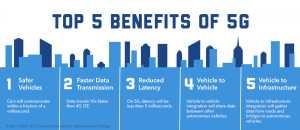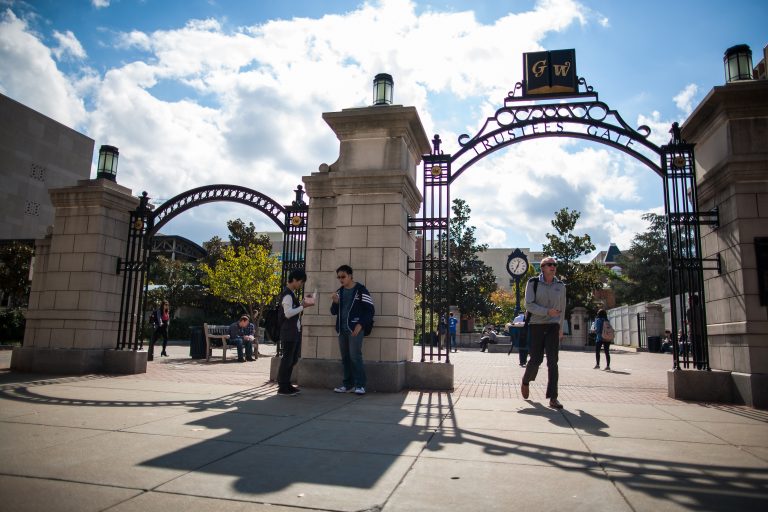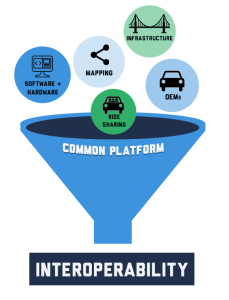After the long flight, I was finally in PARIS! I decided to wait for my roommate whose flight was coming a few hours later instead of going straight to the Airbnb. Her flight ended up being delayed and I had to wait at the airport longer than expected. I was starving and the only place to eat in the airport was McDonalds:: barf:: I go up to the kiosk thing to order my heart attack and there are a ton of options for different kinds of burgers – things we don’t get in the good ole US of A. Being basic (and safe) I order the ushe- Chicken nuggets, fries, BBQ sauce, and a water. Super excited for my meal I go to slide in my card and it gets REJECTED! No worries, I have a couple other cards- REJECTED-REJECTED! Oh, great this is a sign that I shouldn’t eat Micky D’s, but I am hungry! Come to find out, I was so busy trying to make sure I packed my two suitcases to capacity, instead of notifying my credit card companies that I will be travelling. Thanks for lookin out Chase!
Hours later my roomie arrives and we Uber it to the Airbnb. Along the drive I see there are a bunch of kebab shops that serve late night food (YAAAASSSSS). The building looked cute from the outside with fake iron balconies. We walk through the big door and there is a spiral staircase and our Airbnb is on the 3rd floor- we drag our bags up the stairs (talk about a work out). The place is cute with hints of a safari theme. We settle in and run downstairs to grab some doner kebabs. These guys don’t do your traditional sauces like tzatziki or garlic sauce, they have interesting sauces such as Samurai (super spicy and obviously my fav), Andalusia (tangy and spicy), and a different approach to ranch and BBQ. The food was delish- or I was super hungry- either way these places are open late and drop fries in the fryer when ordered.
The next day I unpacked my two suitcases realizing I probably don’t need all the clothes I packed :/ Later I ventured out to the grocery store with my handy dandy Google Translate app. I bought the essentials- bread, butter, eggs, milk, pasta, and Prince cookies (if you haven’t had them before- YOU NEED TO). I kept walking around the store trying to look for chicken, beef, or salmon – but NOTHING. Come to find out the French don’t eat a lot of meat on the reg… so their grocery stores aren’t stacked with protein but have a lot of carbs (baguettes, croissants, and other carb and sugar filled treats that are mos def NOT part of my New Year’s Resolution. American grocery store. Looks like I am going to learn how to be a vegetarian in Paris.
Friday was orientation, according to Google Maps the journey is 1 hour and 11 minutes and we have to switch trains at a major station to take the commuter rail into Cergy. My roomie and I have navigated the NYC and DC train system, so we felt like this should be a piece of cake, we added in an extra hour buffer to ensure if we got lost we wouldn’t’ be late. The Metro is right in front of the Airbnb, we bought a book of 10 tickets each and hopped on our first train- super easy. We get to Gare Saint-Lazare where we need to get on the commuter line and are completely lost. Think getting off the train at Union Station, seeing a bunch of stores but no signs for your train in sight... oh and you don’t understand the language. This was basically us trying to ask security guards directions by showing them Google Maps and hand gestures. We finally found a train that would take us to ESSEC, but it kept getting delayed, we ended up waiting 45 minutes for the train to arrive. Finally, 2 and a half hours later we arrived at Orientation. The coordinator was almost done with her presentation when we walked in. I know what you’re thinking- these girls didn’t make it in time for chocolate croissants and coffee, but never fear this is France - there are always croissants and coffee. Sipping on our Frenchie essentials we took a tour of the campus and were told this is the end of Orientation. We spent 2.5hrs getting to ESSEC but spent less than an hour at the school. On the journey home, we figured our way around the station- turns out it’s a HUGE station connected to other stations. A ten-minute walk that is now ingrained into our memory through various corridors to get to our station.
After our crazy commute we realized it was Friday night, so you know what that means- a yummy dinner and bar hopping: D We ate an amazing dinner consisting of escargot, salmon tartare, ravioli, the best steak EVER, and a trio of desserts at La Marina! Post dinner we ventured to this speakeasy through the freezer door of a taco joint (yes you read correctly, a TACO JOINT!) Sadly, we were too full from dinner to indulge in tacos, but the music behind the freezer door made me fall in love with the spot- old school Hip Hop and R&B <3 <3 <3 We kept saying we will leave after the song was over but loved every track playing and ended up making friends with a couple French ladies who gave us suggestions on what bars are good in the area, one in particular- Little Red Door. We left the taco place without tacos (still too full) and headed on over to Little Red Door. There was a little wait, but so worth it. We were seated in the loft with a nice view of the quirky Parisian bar. The bartenders come up to the table to take your order and make great suggestions- this is a must see if you’re ever in Paris.
The journey getting here was a struggle, but once my credit card started working and I met my roomie, I knew this is going to be an amazing life changing experience.






 network coverage, and less latency than 4G networks. Experts predict the 5G network is what is needed to successfully launch autonomous vehicles.2 Autonomous vehicles will shape the future of mobility and infrastructure because they will possess technology that communicates with other cars, roads, bridges, pedestrians, etc. This aggregated data will lead to the creation of Smart Cities with smart infrastructures, and the 5G network is vital to properly gather and process massive amounts of data in real time. It is essential that AVs have this ultra-high speed network because communication between vehicles and infrastructure must always be completely up-to-the-minute to ensure the safety of everyone on the road. The bandwidth and speed made possible by 5G networks will benefit AVs by making cloud computing more able to reliably aid connected cars in making split-second decisions.
network coverage, and less latency than 4G networks. Experts predict the 5G network is what is needed to successfully launch autonomous vehicles.2 Autonomous vehicles will shape the future of mobility and infrastructure because they will possess technology that communicates with other cars, roads, bridges, pedestrians, etc. This aggregated data will lead to the creation of Smart Cities with smart infrastructures, and the 5G network is vital to properly gather and process massive amounts of data in real time. It is essential that AVs have this ultra-high speed network because communication between vehicles and infrastructure must always be completely up-to-the-minute to ensure the safety of everyone on the road. The bandwidth and speed made possible by 5G networks will benefit AVs by making cloud computing more able to reliably aid connected cars in making split-second decisions.





